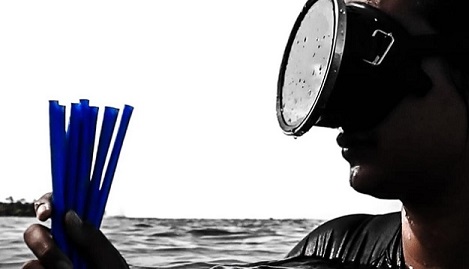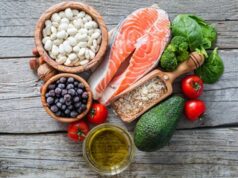 SAN FRANCISCO—A plastic alternative made from seaweed is now a reality thanks to the work of LOLIWARE and its founder and CEO Chelsea Briganti. On Earth Day, April 22, the company announced that it has developed the first seaweed pellet—the SEA Tech Pellet—created from natural biomaterials to replace plastic at scale. Already, with the help of American manufacturer Sinclair and Rush, LOLIWARE has produce a seaweed straw that has captured the interest of the hotel industry’s leading chains. The company has also produced disposable cutlery and single use packaging products.
SAN FRANCISCO—A plastic alternative made from seaweed is now a reality thanks to the work of LOLIWARE and its founder and CEO Chelsea Briganti. On Earth Day, April 22, the company announced that it has developed the first seaweed pellet—the SEA Tech Pellet—created from natural biomaterials to replace plastic at scale. Already, with the help of American manufacturer Sinclair and Rush, LOLIWARE has produce a seaweed straw that has captured the interest of the hotel industry’s leading chains. The company has also produced disposable cutlery and single use packaging products.
From a cost standpoint, the straws are competitive with other leading plastic straw alternatives. The straws are available in three colors: Blue Carbon, Black, and Natural/White. Custom coloring is available at high volumes. Ingredients are simply mineral color, seaweed blend, and shell powder.
The seaweed-based product replacements are an alternative to outsourcing plastics from China—a needed step toward reducing plastic in landfills and oceans.
“The realization that food technology is not well-suited for mass production at a competitive price point is what gave rise to the new generation of LOLIWARE,” Briganti told Green Lodging News. “To effectively address the global plastic crisis, we needed to design for scale. Which is what we have done by creating a seaweed-derived material technology that can be mass-produced on existing plastic equipment.”
‘Virtually No Adoption Barriers’
LOLIWARE’s multi-patent pending seaweed pellets can be processed into any type of packaging, using the same equipment that makes traditional petroleum-based plastics. Because of its universal compatibility with existing plastic-manufacturing equipment, there are virtually no adoption barriers. LOLIWARE is now working with plastics industry leaders to scale rapidly.
“Now is the time to swap plastic for seaweed,” Briganti says. “Climate change and plastic pollution are the defining issues of our time, ruinous to both planetary and human health. It’s going to take a global effort to change course and we all have a part to play. In a world continually bombarded with bad news, we hope the SEA Technology and its use in our straws demonstrates that a plastic-free future is within reach.”
LOLIWARE’s seaweed pellets are not made from your “run of the mill” seaweed. They are made from farmed seaweed.
“Farmed seaweed is different from seaweed found in the ocean in the way they are harvested,” Briganti says. “Wild seaweed is vulnerable to poor harvesting practices as these are often unregulated, with little studies done to monitor the tolerable impacts of such harvesting on the natural environment. There is also the risk of contamination by heavy metals for wild seaweed that grows in polluted waters. The expansion of the seaweed industry to replace plastic at scale cannot be met by wild-harvested seaweed alone, especially if we are to consider environmental impacts.”
A New Blue, Circular Bioeconomy
“Farmed seaweed, when done sustainably, can not only enable the replacement of plastic at scale but also help build a new blue, circular bioeconomy for millions of people worldwide (especially whose livelihoods have been impacted by climate change),” Briganti adds. “Seaweed farming contributes to the growth and longevity of small seaweed farms in coastal communities, thus contributing to their socio-economic well-being. Most seaweed farms are women-owned/run, minority-owned/run.”
Seaweed captures 5 to 20 times more carbon than land-based forests per unit area and once made into pellets, then products, biodegrades easily.
“Our materials are compounded solely from biodegradable, food-grade (FDA-approved or Generally Recognized As Safe (GRAS)) ingredients which are known to benignly degrade in natural environments under ambient conditions (no special composting infrastructure is needed),” Briganti says. “This stringent control over the composition renders our products fully biodegradable and compostable in all environments, including the ocean and a compost pile in your backyard. Depending on the environment, our product breaks down in as little as three months and within 12 months at the very most.
“The inspiration for all our materials is simple: Everything we create and release into the world should be Designed to Disappear,” Briganti says. “Waste truly is a design flaw. We believe regenerative design is the future and what we create as humans should contribute to a healthier, more resilient, and equitable planet.”
Glenn Hasek can be reached at greenlodgingnews@gmail.com.







